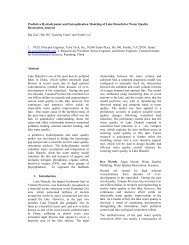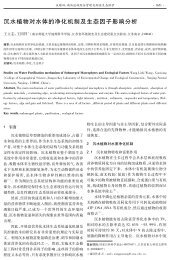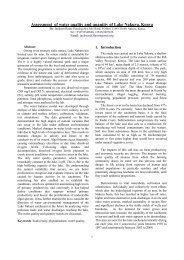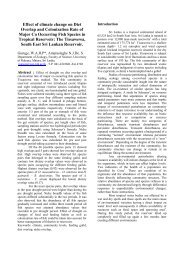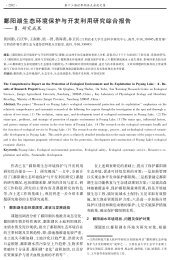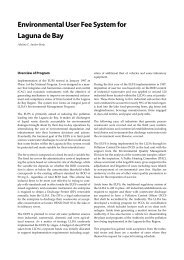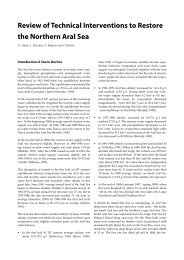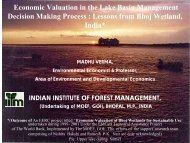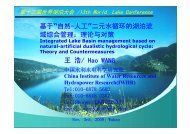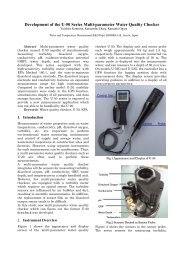Renuka Lake ecosystem and wetland protection, Lesser Himalaya ...
Renuka Lake ecosystem and wetland protection, Lesser Himalaya ...
Renuka Lake ecosystem and wetland protection, Lesser Himalaya ...
You also want an ePaper? Increase the reach of your titles
YUMPU automatically turns print PDFs into web optimized ePapers that Google loves.
other l<strong>and</strong> uses. It even absorbs sediment,chemical nutrients <strong>and</strong> other substances innon-point source run off. Riparian zones areinstrumental in water quality improvementfor both surface <strong>and</strong> water flowing intowater bodies through sub-surface or groundwater flow. The wetl<strong>and</strong> riparian zonesshows a particularly high rate of removal ofnitrate entering a stream <strong>and</strong> thus has aplace in eutrophication management.Because of there prominent role insupporting a diversity of species, riparianzones wetl<strong>and</strong> are often the subject ofnational <strong>protection</strong> in a Biodiversity ActionPlan.<strong>Renuka</strong> <strong>Lake</strong> having a riparian course<strong>and</strong> a wetl<strong>and</strong> shows water quality control,soil conservation, their biodiversity <strong>and</strong>influence on aquatic <strong>ecosystem</strong>. Toestablish these characters a comprehensivestudy of water quality, lake <strong>and</strong> wetl<strong>and</strong>sediment geochemistry, isotope chemistryto determine rate of sedimentation, <strong>and</strong>survey of flora <strong>and</strong> fauna distribution havebeen carried out. The lake is unique inlesser <strong>Himalaya</strong> <strong>and</strong> is under RamsarConvention Environment Act.2. MethodologyThe water samples were collected in prewashed1L polythelene bottles filling it tothe capacity. Within 5-6 hours of collectionpH, E.C, D.O, TDS etc. were measuredusing portable field kit. The samples werefiltered using 0.45 µm Millipore filtermembranes. A part of this was used formeasurement of carbonate <strong>and</strong> bi-carbonateby acid titration, choride by AgNO 3titration, sulphate by Ba(ClO 4 ) 2 titrationafter passing the samples through cationexchange resin, phosphate by an ascorbicacid spectrophotometry, silicate bymolybdenum blue spectrometry. Na, K byflame photometer <strong>and</strong> Ca <strong>and</strong> Mg by AAS2100(Perkin Elmer Atomic AbsorptionSpectrophotometer).The sediment samples carefully selectedwere collected from lake <strong>and</strong> wetl<strong>and</strong>, dried<strong>and</strong> processed. The samples were ground to-200 mesh size in agate mortar <strong>and</strong> wereused for making pellets. These pellets weresubjected to X-ray fluorescencespectrophotometer (energy dispersive,Phillips EXAM-6 system) <strong>and</strong> major <strong>and</strong>trace elements were estimated. Theaccuracy was checked by running USGSsediment st<strong>and</strong>ards SDO1, SCO1, GSD9<strong>and</strong> SO1. The major element accuracy is~2.5%. The REE’s were measured on ICP-MS using G2 <strong>and</strong> SDO1 st<strong>and</strong>ards in theUniversity of Kiel, Germany. As the REE.sare present in minor quantities in the matrixelements, therefore, elements have to beseparated as a group so that the spectralinterference from the matrix elements canbe avoided. The precision of data is betterthan 5% except for Ce <strong>and</strong> Nd, which haveprecision of about 10% <strong>and</strong> for REE(



